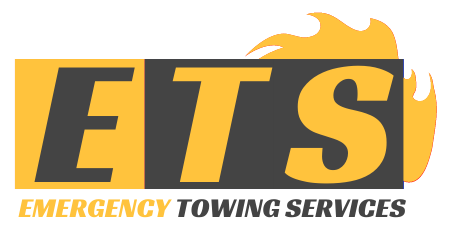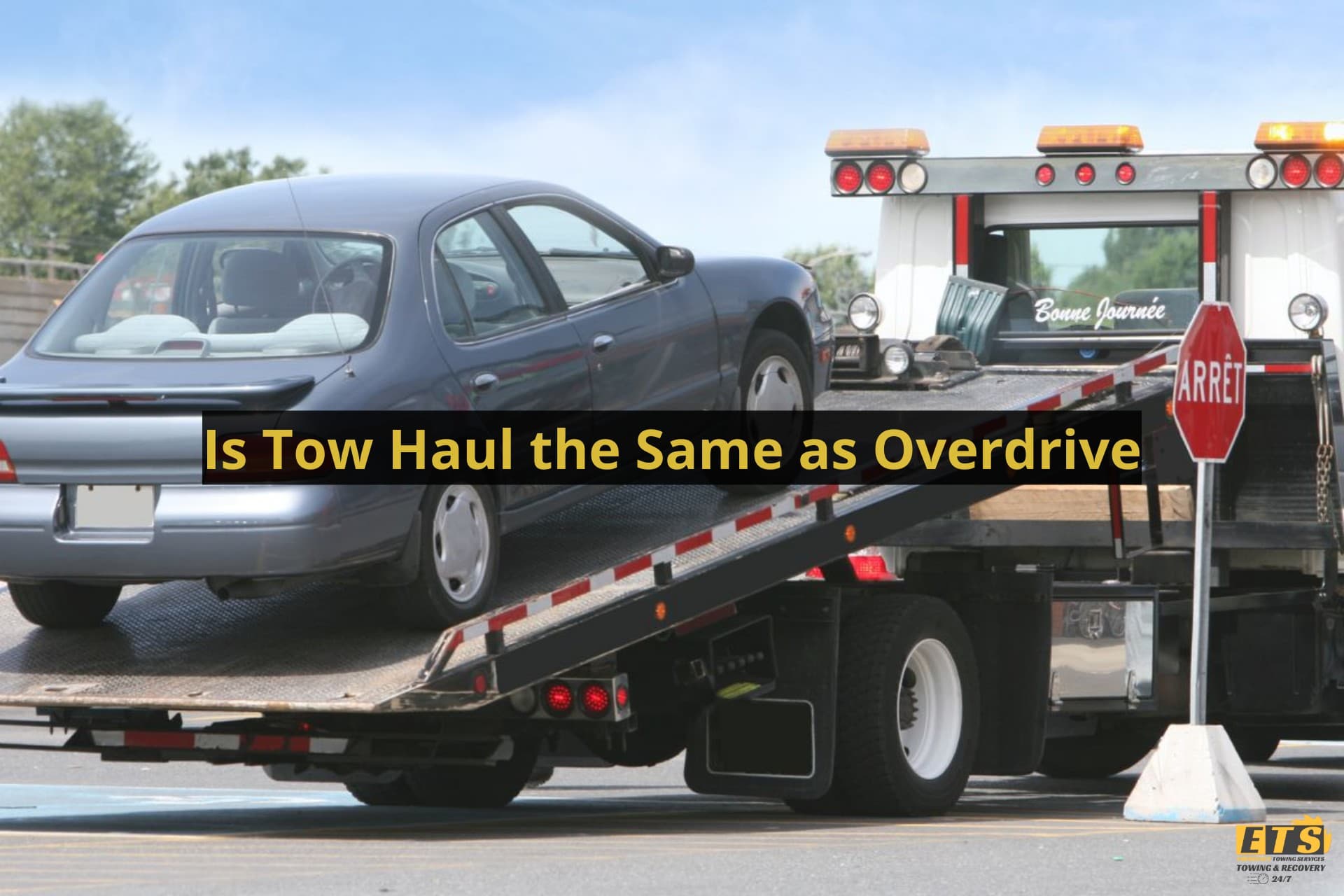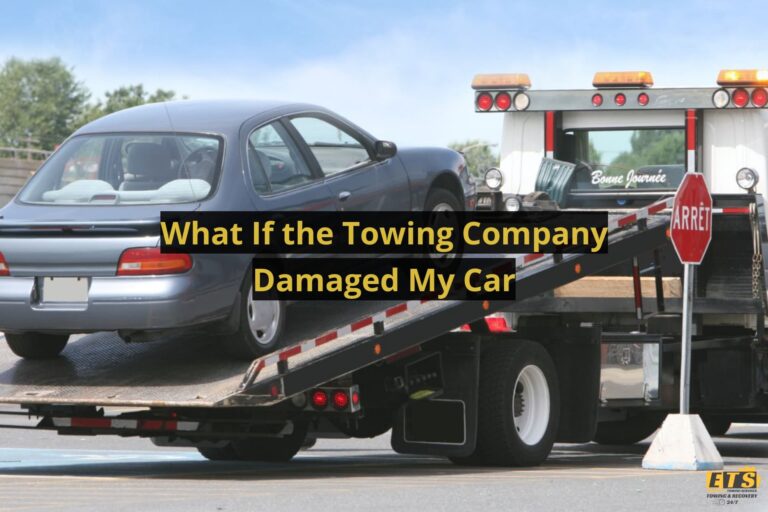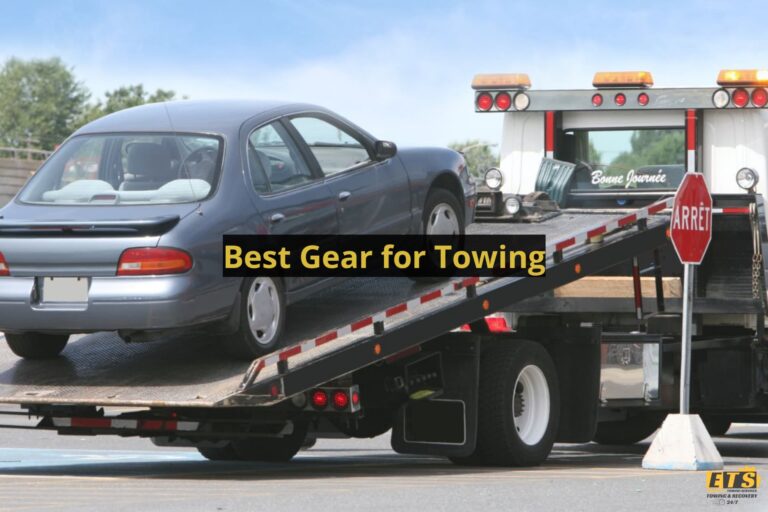Is Tow Haul The Same As Overdrive
The information presented in this article is provided for general informational purposes only, and may not reflect the current laws or legal developments. This article does not constitute legal advice, and the reader should not act on the information contained in this article without first seeking professional counsel. We make no guarantees about the accuracy, completeness, or adequacy of the information contained in this article. The reader assumes all risks and liabilities associated with any actions taken as a result of reading this article. To obtain legal advice on your specific matter, please contact a qualified legal professional.
Do you ever find yourself wondering if tow haul and overdrive are the same thing?
While they may seem similar in function, there are actually several differences between the two.
Understanding these differences can help you make the most of your vehicle and optimize its performance.
Tow haul and overdrive are both features available on many modern vehicles, particularly trucks and SUVs.
While both features relate to transmission function, they serve different purposes and have distinct impacts on how your vehicle performs on the road.
By exploring the nuances of each feature, you can determine which one is best suited for your driving needs and get the most out of your vehicle’s capabilities.
Definition and Purpose of Tow Haul
Understanding how to engage the tow haul feature in your vehicle can enhance your driving experience and optimize performance when towing heavy loads.
Tow haul is a feature that changes the way your transmission operates, allowing for smoother gear shifting and more precise engine braking. It’s designed to improve your vehicle’s overall stability and safety while towing.
One of the main benefits of using tow haul is that it helps prevent excessive wear and tear on your transmission. When you’re towing a heavy load, especially up steep hills or over long distances, your transmission can easily get overheated. By engaging tow haul mode, you’ll be able to reduce the strain on your transmission by keeping it in lower gears for longer periods of time.
However, there are also some limitations to using tow haul mode that you should be aware of. If you’re not actually carrying a heavy load or driving on hilly terrain, engaging this feature could actually result in decreased fuel efficiency since it keeps the engine revving higher than necessary. Additionally, if you use tow haul when driving at high speeds on flat roads or highways, it could cause unnecessary strain on other parts of your vehicle such as brakes and tires.
Therefore, it’s important to only use tow haul when necessary – that is when towing a significant amount of weight uphill or downhill.
Definition and Purpose of Overdrive
Although often confused with its counterpart, the function and purpose of overdrive is distinct from other features in a vehicle.
Overdrive refers to a gear that allows for reduced engine RPMs while maintaining the same speed as a higher gear.
The benefits of using overdrive include increased fuel efficiency and reduced engine wear due to lower RPMs.
However, using overdrive on steep hills or when towing heavy loads can cause the transmission to overheat and damage components.
When in use, overdrive affects fuel efficiency by allowing for lower RPMs at cruising speeds, which reduces the amount of fuel used by the engine.
This is because engines are most efficient when operating at low RPMs with high torque output.
Additionally, the reduced wear on engine components due to lower RPMs can result in longer-lasting parts and less frequent repairs.
On the other hand, one major drawback of using overdrive is that it may not provide enough power for certain driving conditions such as steep hills or when towing heavy loads.
In these situations, using overdrive can cause unnecessary strain on the transmission and lead to overheating or even failure of transmission components.
Therefore, it’s important to understand how your vehicle’s overdrive functions and when it should be used based on driving conditions.
Differences in Gear Ratio
You may have noticed that your vehicle has different gear ratios, which can affect its performance and fuel efficiency.
Overdrive is a gear ratio comparison to the highest gear in the transmission, designed to reduce engine RPMs and improve gas mileage on the highway. On the other hand, tow haul is a lower gear ratio used for towing or hauling heavy loads.
While overdrive helps conserve fuel by reducing engine speed at cruising speeds, tow haul provides more power and control when carrying heavy loads.
The differences in gear ratio between overdrive and tow haul modes directly impact fuel efficiency. When you engage overdrive mode on flat terrain, your car’s engine operates at lower RPMs than it would without it. This decreases gas consumption because less energy is needed to maintain the same speed as before.
Conversely, using tow haul mode causes your car’s engine to work harder, leading to higher gas consumption since it requires more energy to move heavy cargo.
In summary, while both overdrive and tow haul modes serve different purposes related to enhancing your vehicle’s performance depending upon driving conditions; they differ significantly in terms of their intended usage and impact upon fuel efficiency.
Therefore, understanding how each mode works can help you make informed decisions about when each one should be used based on various factors such as road conditions and cargo weight.
Differences in Transmission Function
Have you ever wondered how your car’s transmission actually works? Well, let’s dive into the differences in transmission function and explore how it impacts your driving experience.
When comparing tow haul and overdrive, the main difference is their function. Tow haul mode changes the shift points to optimize performance when towing or hauling heavy loads. On the other hand, overdrive is meant for cruising at highway speeds with minimal engine strain.
The performance implications of these two functions are quite significant. While tow haul may seem like a more powerful option, it can actually decrease fuel efficiency if used unnecessarily. This is because it keeps the engine revving higher than necessary for regular driving conditions. Overdrive, on the other hand, can increase fuel efficiency by allowing the engine to run at lower RPMs while maintaining high speeds.
In summary, understanding how your car’s transmission functions can greatly impact your driving experience and fuel efficiency. Knowing when to use tow haul versus overdrive can make all the difference in optimizing performance and gas mileage.
So next time you hit the road, be mindful of which mode you’re using and enjoy a smoother ride with better gas mileage!
Compatibility with Different Types of Vehicles
If you drive a truck or SUV, you may be familiar with the tow haul feature. This function is designed to improve your vehicle’s towing capabilities by adjusting the shift points and engine power delivery.
On the other hand, if you own a car or sedan, you might have heard of overdrive mode. This setting allows your vehicle to operate at lower RPMs while maintaining speed and fuel efficiency on highways.
Tow Haul for Trucks and SUVs
When you want to take your truck or SUV on a long journey with heavy cargo, it’s helpful to engage the special gear designed for pulling and carrying loads, like putting on your work boots before starting a tough job.
This is where tow haul comes in handy. Tow haul mode adjusts the shift points of your vehicle’s transmission, allowing for more power and torque when towing or hauling heavy loads. It also increases engine braking for better control while descending hills.
Tow haul efficiency can be especially beneficial for SUVs with high towing capacity. When properly equipped, many SUVs can tow up to 5,000 pounds or more. However, without using tow haul mode during these tasks, you may experience increased wear and tear on your vehicle’s transmission and brakes.
So if you plan on taking your SUV out for some heavy-duty towing or hauling, engaging tow haul mode can help ensure a safe and efficient journey.
Overdrive for Cars and Sedans
You’re cruising down the highway in your sedan, enjoying the freedom of the open road, but did you know that engaging overdrive can give you even more power and fuel efficiency for an even more thrilling ride?
Overdrive is a transmission gear that allows your car to achieve higher speeds while using less fuel. It works by reducing engine RPMs (revolutions per minute), which means your car’s engine won’t have to work as hard to maintain speed.
The benefits of overdrive are clear: better fuel economy and a smoother ride at higher speeds. However, it’s important to note that not all cars have overdrive capabilities. Additionally, using overdrive in certain driving conditions (such as uphill or towing heavy loads) can put too much strain on the engine and cause damage.
This is where tow haul comes in handy for trucks and SUVs as it provides additional power when needed. Overall, if used correctly, overdrive can provide a fantastic driving experience with improved efficiency and performance.
Use Cases for Tow Haul and Overdrive
You might be wondering why you’d use these two features in different situations, but understanding the unique benefits of each can greatly improve your driving experience.
Tow Haul and Overdrive are both useful tools that come in handy in specific scenarios. Here are some examples:
- If you’re towing a heavy load, Tow Haul is the better choice. It changes the shift points to accommodate the added weight and reduces shifting frequency, which helps with acceleration and deceleration while towing. This feature also increases engine braking to prevent overheating your brakes on steep descents.
- Overdrive is perfect for long highway drives when you want to save fuel and reduce engine noise while cruising at high speeds. When activated, it lets the car’s transmission shift into higher gears at lower RPMs, improving fuel economy without sacrificing performance.
Switching between Tow Haul and Overdrive while driving is easy! Most modern cars have a button or lever on the gear shifter that allows you to change between modes quickly.
However, be sure to switch before entering a situation where you need one mode over another – trying to change mid-drive could cause damage to your car or make driving more difficult.
In conclusion, deciding whether Tow Haul or Overdrive is better depends on the situation. If towing a heavy load, use Tow Haul for improved acceleration and braking control. For long highway drives with minimal inclines or declines, use Overdrive for increased fuel efficiency and reduced engine noise.
Switching between modes should only be done before encountering a scenario where one mode is necessary over another – not during driving.
Pros and Cons of Tow Haul
If you’re considering using tow haul, there are both advantages and disadvantages to keep in mind.
One of the main benefits of tow haul is that it can improve your vehicle’s overall towing performance by adjusting shift points and reducing gear hunting.
On the other hand, some drivers may find that tow haul mode causes their vehicle to use more fuel or experience increased wear and tear on the transmission.
Advantages of Tow Haul
When you’re driving with a heavy load, using the tow haul feature can help make your journey smoother and safer by adjusting your vehicle’s gear ratios to better handle the weight.
One of the biggest advantages of using tow haul is improved control, which can give you more confidence on the road. With this feature, your transmission will shift gears more smoothly and provide better acceleration when needed. This means that you’ll have better control over your vehicle’s speed and movement, which is especially important when towing or hauling heavy loads.
Another advantage of using tow haul is increased safety. By keeping your engine RPMs higher, this feature helps reduce the risk of overheating and other mechanical issues that can arise when towing or hauling heavy loads.
Additionally, using tow haul can also help reduce wear on your vehicle’s brakes by providing stronger engine braking, which means less reliance on the brake pedal. This not only improves safety but also saves you money in maintenance costs in the long run.
Finally, it’s worth noting that using tow haul doesn’t necessarily mean sacrificing fuel efficiency; many modern vehicles are designed with fuel-saving features built into their transmissions that work alongside tow-haul mode to optimize power delivery while still conserving fuel.
Disadvantages of Tow Haul
As you hit the open road with a heavy load, it’s important to be aware of the potential drawbacks that come with relying solely on your vehicle’s towing capabilities through tow haul.
One of the main disadvantages is reduced fuel efficiency. Tow haul mode keeps your engine revving higher than normal to provide more torque and better control over your trailer. This added strain can cause your gas mileage to suffer significantly, which means you’ll need to make more frequent stops at gas stations along the way.
Another issue that comes with using tow haul mode too much is increased wear and tear on your vehicle. By constantly keeping your engine in high gear, you’re putting extra stress on its transmission, brakes, and other vital components. Over time, this can lead to costly repairs and shorter overall lifespan for your vehicle.
It’s important to use tow haul sparingly and only when necessary to avoid these negative consequences down the line.
Pros and Cons of Overdrive
If you’re considering using overdrive in your vehicle, there are some pros and cons to keep in mind.
Pros:
- Using overdrive can save you fuel and reduce engine wear and tear.
- It lowers engine RPMs at higher speeds.
Cons:
- Overdrive may cause your vehicle to struggle on steep hills.
- It may also cause your vehicle to struggle when towing heavy loads.
- This is because it reduces torque output.
Advantages of Overdrive
Using the overdrive feature can lead to better fuel efficiency and a smoother driving experience.
When you engage your vehicle’s overdrive, it allows the engine to operate at a lower RPM while maintaining the same level of speed. This means that your car consumes less fuel since the engine isn’t working as hard as it would be without overdrive. As a result, you save money on gas expenses, which is especially beneficial for long-distance drives.
In addition to its cost-saving benefits, overdrive also offers a more comfortable driving experience. By reducing the RPMs of your engine, you’ll enjoy less noise and vibrations inside your car cabin.
Overdrive is also useful in uphill situations where it helps maintain speed and power while minimizing wear-and-tear on your transmission system.
Overall, using overdrive is an effective way to improve fuel efficiency, reduce engine strain, and prolong the life of your vehicle’s transmission system.
Disadvantages of Overdrive
Oh, so you think using overdrive is all sunshine and rainbows? Well, let me tell you about the potential drawbacks of this feature.
While overdrive can improve fuel efficiency by allowing the engine to run at a lower RPM, it can also lead to increased wear and tear on the transmission. This is because overdrive shifts into a higher gear than normal driving, putting extra strain on the transmission.
Another drawback of using overdrive is its impact on engine performance. When driving uphill or towing heavy loads, overdrive may not provide enough power for your vehicle to maintain speed. This could cause unnecessary strain on the engine and lead to decreased performance overall.
Additionally, safety concerns should be taken into consideration when using overdrive. It may not be suitable for certain driving conditions such as icy or wet roads where more control is needed.
Conclusion
Now that you know the differences between tow haul and overdrive, it’s important to consider which option is best for you.
If you’re planning on towing a heavy load or driving through steep terrain, tow haul may be your best bet. With its lower gear ratio and optimized transmission function, it will provide the necessary power and control needed for these challenging situations.
On the other hand, if you’re cruising down the highway with little resistance, overdrive may be a more efficient choice. Its higher gear ratio reduces engine RPMs and improves fuel economy.
Imagine feeling the wind in your hair as you zip down an open road with ease thanks to overdrive – but always keep in mind that it may not be suitable for every situation. Ultimately, understanding the differences between tow haul and overdrive will help you make informed decisions about how to optimize your vehicle’s performance.







